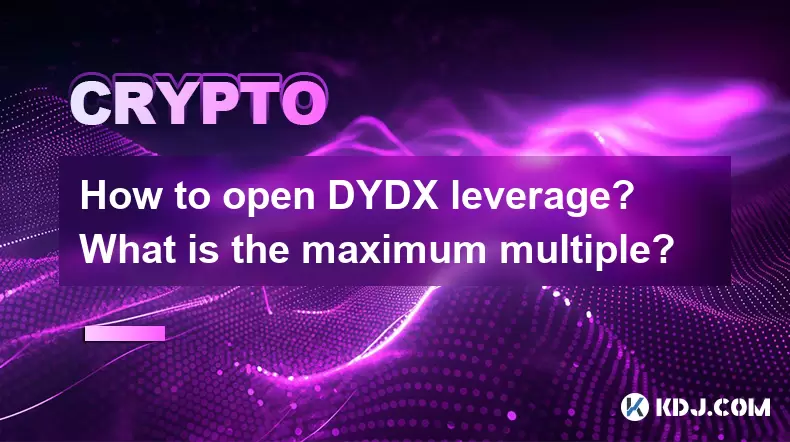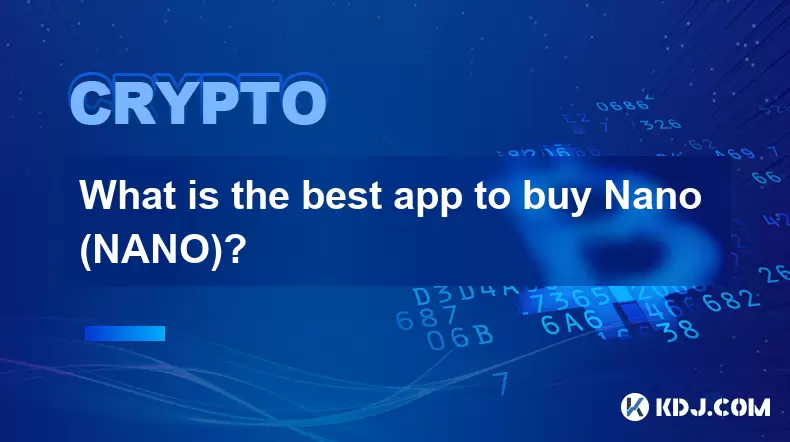-
 Bitcoin
Bitcoin $118300
1.01% -
 Ethereum
Ethereum $4215
0.69% -
 XRP
XRP $3.198
-3.83% -
 Tether USDt
Tether USDt $1.000
-0.01% -
 BNB
BNB $803.4
-0.53% -
 Solana
Solana $180.3
-0.67% -
 USDC
USDC $0.9998
-0.01% -
 Dogecoin
Dogecoin $0.2334
-1.49% -
 TRON
TRON $0.3394
0.86% -
 Cardano
Cardano $0.7980
-1.45% -
 Chainlink
Chainlink $22.19
6.65% -
 Hyperliquid
Hyperliquid $43.41
0.13% -
 Stellar
Stellar $0.4407
-3.13% -
 Sui
Sui $3.843
-2.24% -
 Bitcoin Cash
Bitcoin Cash $564.7
-3.74% -
 Hedera
Hedera $0.2588
-3.41% -
 Ethena USDe
Ethena USDe $1.001
0.00% -
 Avalanche
Avalanche $23.64
-3.37% -
 Litecoin
Litecoin $120.0
-4.01% -
 Toncoin
Toncoin $3.342
-1.11% -
 UNUS SED LEO
UNUS SED LEO $9.038
0.60% -
 Shiba Inu
Shiba Inu $0.00001347
-0.81% -
 Uniswap
Uniswap $10.69
-4.58% -
 Polkadot
Polkadot $4.034
-1.30% -
 Dai
Dai $1.000
0.01% -
 Bitget Token
Bitget Token $4.472
-1.52% -
 Cronos
Cronos $0.1571
-3.04% -
 Pepe
Pepe $0.00001207
-2.21% -
 Monero
Monero $273.8
-3.19% -
 Ethena
Ethena $0.7520
2.75%
How to open DYDX leverage? What is the maximum multiple?
Opening leverage on DYDX can boost crypto returns but involves risks; ensure you understand the process and set stop-loss orders to manage positions effectively.
May 07, 2025 at 05:21 pm

Opening leverage on DYDX can be an exciting way to potentially increase your returns in the cryptocurrency market. However, it's important to understand the process thoroughly and be aware of the risks involved. In this article, we'll walk you through the steps to open leverage on DYDX and discuss the maximum leverage multiple available.
Understanding DYDX and Leverage
DYDX is a decentralized trading platform that allows users to trade cryptocurrencies with leverage. Leverage in trading means borrowing funds to increase the size of a position, which can amplify both potential gains and losses. It's crucial to understand that using leverage increases the risk of your investment.
Preparing to Use DYDX
Before you can open a leveraged position on DYDX, you need to ensure you have the necessary preparations in place. Here's what you need to do:
- Create a DYDX Account: Visit the DYDX website and sign up for an account. You will need to connect your wallet, such as MetaMask, to interact with the platform.
- Fund Your Account: Deposit the cryptocurrency you wish to trade. DYDX supports various cryptocurrencies, but ensure you have enough to cover the margin requirements for the leverage you plan to use.
- Understand the Risks: Leverage trading can lead to significant losses. Make sure you fully understand the risks and are prepared to potentially lose your entire investment.
Opening a Leveraged Position on DYDX
Now that you're prepared, let's go through the steps to open a leveraged position on DYDX:
- Navigate to the Trading Interface: Once logged in, go to the trading section of the DYDX platform.
- Select the Market: Choose the cryptocurrency pair you want to trade. For example, if you want to trade Bitcoin with leverage, select the BTC/USD pair.
- Set Your Leverage: Decide on the amount of leverage you want to use. DYDX allows you to adjust the leverage from 1x up to the maximum allowed for the specific market.
- Enter Your Order: Specify the size of your position and the price at which you want to enter the market. You can choose between market orders and limit orders.
- Review and Confirm: Double-check all the details of your order, including the leverage, position size, and entry price. Once you're satisfied, confirm the order to open your leveraged position.
Maximum Leverage Multiple on DYDX
The maximum leverage multiple on DYDX varies depending on the market you are trading. As of the latest information, DYDX offers up to 20x leverage on some of the most liquid markets like BTC/USD and ETH/USD. However, for less liquid markets, the maximum leverage might be lower. It's essential to check the specific market you are interested in to see the available leverage options.
Managing Your Leveraged Position
After opening a leveraged position, it's important to manage it actively to mitigate risks and maximize potential gains. Here are some tips:
- Set Stop-Loss Orders: A stop-loss order can help limit your losses by automatically closing your position if the market moves against you.
- Monitor Your Position: Keep an eye on the market and your position's performance. Be prepared to adjust your strategy based on market conditions.
- Understand Margin Calls: If the market moves against your position, you might receive a margin call. This means you need to add more funds to your account to maintain your position. Failure to do so can result in your position being liquidated.
Closing Your Leveraged Position
When you're ready to close your leveraged position, follow these steps:
- Navigate to the Trading Interface: Go back to the trading section where you opened your position.
- Select Your Position: Find the position you want to close in the list of open positions.
- Choose to Close: Select the option to close the position. You can choose to close the entire position or a portion of it.
- Review and Confirm: Double-check the details of your closing order, including the size and the price. Once you're satisfied, confirm the order to close your position.
FAQs
Q: Can I change the leverage on an existing position on DYDX?
A: No, once you have opened a position with a specific leverage, you cannot change the leverage on that position. If you want to adjust your leverage, you would need to close the existing position and open a new one with the desired leverage.
Q: What happens if I can't meet a margin call on DYDX?
A: If you fail to meet a margin call, your position will be liquidated. This means DYDX will automatically close your position at the current market price to cover the borrowed funds. Any remaining funds in your account will be returned to you.
Q: Is there a fee for using leverage on DYDX?
A: Yes, DYDX charges fees for trading with leverage. These fees include borrowing fees for the leveraged amount and trading fees for opening and closing positions. The exact fees can vary based on the market and the size of your position.
Q: Can I use leverage on any cryptocurrency on DYDX?
A: No, DYDX offers leverage on specific markets, and the available leverage can vary. You should check the platform to see which markets support leverage and the maximum leverage available for each.
Disclaimer:info@kdj.com
The information provided is not trading advice. kdj.com does not assume any responsibility for any investments made based on the information provided in this article. Cryptocurrencies are highly volatile and it is highly recommended that you invest with caution after thorough research!
If you believe that the content used on this website infringes your copyright, please contact us immediately (info@kdj.com) and we will delete it promptly.
- Gemini AI's Crypto Crystal Ball: Predicting 1000x Gains with Meme Coins?
- 2025-08-11 02:50:12
- Cold Wallet Crypto Presale: Your Price Edge in the Wild West of Crypto
- 2025-08-11 02:50:12
- Lil Pepe: The Undervalued Meme Coin Set to Explode in 2025?
- 2025-08-11 02:30:12
- MoonBull, Crypto Trends, and Meme Culture: Navigating the Hype in 2025
- 2025-08-11 02:30:12
- BlockchainFX, Crypto Presale, Bitcoin Hyper: The NY Perspective on 2025's Hottest Crypto
- 2025-08-11 01:10:14
- Cold Wallet, Crypto Presales, and ROI Potential: A New Yorker's Take
- 2025-08-11 01:10:14
Related knowledge

How to purchase Aragon (ANT)?
Aug 09,2025 at 11:56pm
Understanding Aragon (ANT) and Its PurposeAragon (ANT) is a decentralized governance token that powers the Aragon Network, a platform built on the Eth...

Where to trade Band Protocol (BAND)?
Aug 10,2025 at 11:36pm
Understanding the Role of Private Keys in Cryptocurrency WalletsIn the world of cryptocurrency, a private key is one of the most critical components o...

What is the most secure way to buy Ocean Protocol (OCEAN)?
Aug 10,2025 at 01:01pm
Understanding Ocean Protocol (OCEAN) and Its EcosystemOcean Protocol (OCEAN) is a decentralized data exchange platform built on blockchain technology,...

Where can I buy UMA (UMA)?
Aug 07,2025 at 06:42pm
Understanding UMA and Its Role in Decentralized FinanceUMA (Universal Market Access) is an Ethereum-based decentralized finance (DeFi) protocol design...

How to buy Storj (STORJ) tokens?
Aug 09,2025 at 07:28am
Understanding Storj (STORJ) and Its Role in Decentralized StorageStorj is a decentralized cloud storage platform that leverages blockchain technology ...

What is the best app to buy Nano (NANO)?
Aug 09,2025 at 03:35am
Understanding Nano (NANO) and Its Unique FeaturesNano is a feeless, instant cryptocurrency designed for fast peer-to-peer transactions. Unlike many ot...

How to purchase Aragon (ANT)?
Aug 09,2025 at 11:56pm
Understanding Aragon (ANT) and Its PurposeAragon (ANT) is a decentralized governance token that powers the Aragon Network, a platform built on the Eth...

Where to trade Band Protocol (BAND)?
Aug 10,2025 at 11:36pm
Understanding the Role of Private Keys in Cryptocurrency WalletsIn the world of cryptocurrency, a private key is one of the most critical components o...

What is the most secure way to buy Ocean Protocol (OCEAN)?
Aug 10,2025 at 01:01pm
Understanding Ocean Protocol (OCEAN) and Its EcosystemOcean Protocol (OCEAN) is a decentralized data exchange platform built on blockchain technology,...

Where can I buy UMA (UMA)?
Aug 07,2025 at 06:42pm
Understanding UMA and Its Role in Decentralized FinanceUMA (Universal Market Access) is an Ethereum-based decentralized finance (DeFi) protocol design...

How to buy Storj (STORJ) tokens?
Aug 09,2025 at 07:28am
Understanding Storj (STORJ) and Its Role in Decentralized StorageStorj is a decentralized cloud storage platform that leverages blockchain technology ...

What is the best app to buy Nano (NANO)?
Aug 09,2025 at 03:35am
Understanding Nano (NANO) and Its Unique FeaturesNano is a feeless, instant cryptocurrency designed for fast peer-to-peer transactions. Unlike many ot...
See all articles

























































































